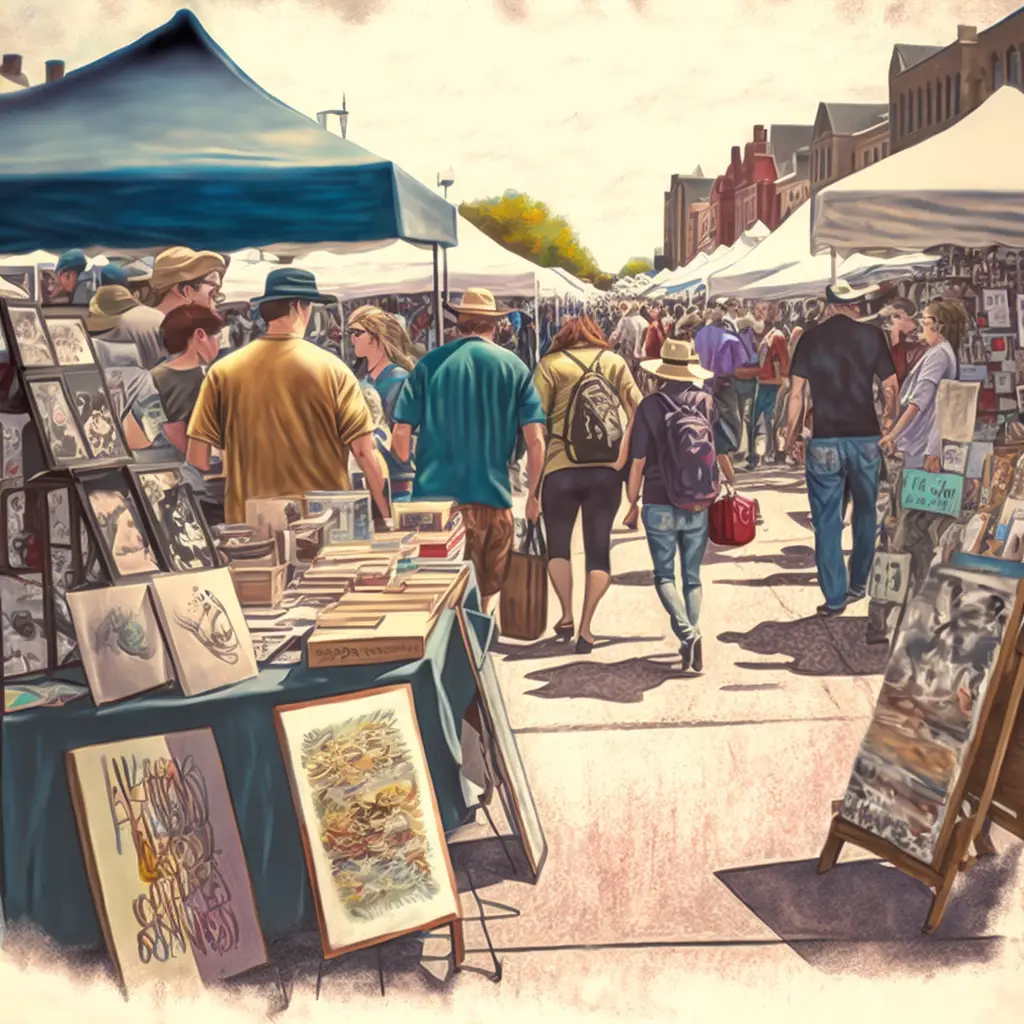If you're thinking about selling your crafts at a craft fair, there are a few things you need to know before you get started. In this blog post, we will provide craft show tips for beginners on how to prepare for their first craft show. We'll cover everything from what to bring with you to how to price your products.
Selling at craft fairs can be a great way to get your business off the ground. By following these craft show tips for beginners, you'll be able to make the most of your experience at the craft fair and sell more of your products!

Before you start selling at craft shows, do your research and make sure it's the right fit for you and your product
Starting to sell your product at craft shows can be a great way to get exposure for your business and make some money, but it’s important that you do the appropriate research beforehand. You’ll want to make sure the type of craft show aligns with the product you’re selling.
Take into account the location, how much other vendors are likely charging for similar items as well as what you need to provide to join the event, such as an application or payment. Will you need to provide options for both cash and credit cards – if so, will there be wi-fi? Understand every aspect of the craft shows you sign up to before you drop money.
It is also important to remember that there is no guarantee you will make a profit out of each event so always ensure that you are taking all possible steps in order to minimize the chances of this occurring. Doing your research before diving into your first craft fair venture ensures a stress-free experience and potential success!
Once you've decided to sell at a craft show, create a budget and stick to it
Crafting a budget is an important step when you're deciding to become a craft fair vendor. There are many costs to consider beyond the price of materials and merchandise such as travel expenses, booth fees, signs, and insurance.
When drawing up a budget for selling at a craft market your best bet is to overestimate the costs in order to plan ahead for any unexpected costs that may arise during the course of the season.
You'll also want to make sure you include enough money in your budget to promote yourself if needed, since this will be key if you want successful sales. Promoting yourself includes being ready to share a business card, running some ads, social media posts, and more.
Planning your budget accurately and sticking to it as closely as possible will help ensure profitability in the long run. It will also help you identify things like price points for your future craft show endeavors.
First craft fair tips: Promote your products before the craft fair
With the upcoming fair, it's time to get your products in the eyes of consumers. Utilizing social media, email marketing, and word of mouth are great ways to start building hype for what you're offering. Sending out emails with discounts and offers can help draw in potential customers, and be sure to take advantage of all the platforms that social media provides.
A craft show can feel really daunting because you don't know how much stock to bring, or whether or not your customers will be there. Making it a big event with your existing customers will help turn people out to the craft market.
Try engaging your followers on all platforms – from Twitter, Instagram and Facebook to blogs and beyond – and you'll see a boost in visibility for your brand. Don't forget the power of word of mouth; friends telling friends about a product can make all the difference. Use these relatively simple devices to promote your products before the fair – your success rate will thank you!
At the craft show, be friendly and engaging with potential customers, but don't be too pushy
Attending a craft fair can be a great way to not only show off your unique creations, but also to make some additional money. However, when dealing with potential customers, it’s important to be friendly and engaging while still respecting their personal boundaries.
Many people are browsing, and it's not quite like running an Etsy shop. People may be there for other reasons, so just smile, hand out your business cards, and don't let the length of the event wear on you.
Make sure you take the time to talk to people and answer any questions that they may have without being overly pushy or insistent. If a customer shows interest in something but needs some time to think about it, allow them the space they need to make their decision. Handing them a business card means that they might look you up on Etsy after the craft show.
An open and inviting atmosphere is key for successful craft fairs; a friendly demeanor can go a long way in inspiring potential customers to buy from you!
If you're not good at this stuff, bring snacks and bring a friend who is. You'll get more sales if you have someone competent manning your first craft show booth.
Have a plan for after the craft fair – follow up with customers, restock your inventory, and evaluate your performance
Making sure that your craft fair experience is profitable and enjoyable requires effort beyond the event itself. It is important to have a plan for what you will do after the craft fair. Following up with customers afterwards is essential, as it offers an opportunity to thank them for their support along with a chance to discuss further opportunities for collaboration.
Restocking inventory should also be on the list, so you can get ready for your next craft event. Finally, it is beneficial to take some time in evaluating your performance from the previous show – what worked, what didn't? It's important not to overlook this step; assessment of what was successful allows you to make changes and decisions that will enable greater success at future events.
Draw customers in with various price points and freebies
We've all seen great AND poor examples of craft show booths. I've seen artists set up shop and their tiniest crafts' price tags sit at hundreds of dollars or more. They don't have any prints, keychains, or more affordable “dollar store” style items to bring people in.
Or, they have really cool stuff, and zero business cards. People surreptitiously take pictures of the booths at the craft show so they can remember to look things up when they get home.
Or, they offer lots of small items, and don't have any shopping bags.
There are lots of great ideas when it comes to craft fair tips – but you should really amass your own ideas, too. Visit some farmers' markets or other local events and spend some time analyzing what you like – and don't like – in booths that sell products. Take pictures (with permission), take business cards, and then apply the knowledge to your own craft fair displays.
Final thoughts
If you're thinking of selling your products at craft fairs, use the tips we've shared to help make the process easier. Do your research, create a budget, and promote your products before the fair. Be friendly and engaging with potential customers, but don't be pushy.
And have a plan for after the fair so you can follow up with customers and restock your inventory. Selling at craft fairs can be a great way to reach new customers and sell more products, but it takes some preparation and effort on your part. With these tips in mind, you're ready to take on the challenge!
